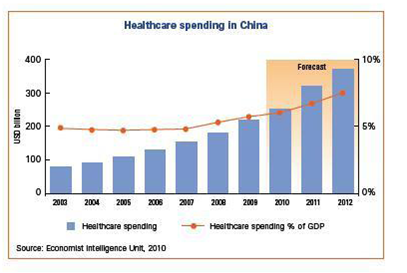In the long run, it behooves a country’s administration to be responsible for the progressive performance of its healthcare system. Thus, the state of health care is a reflection of the stewardship provided by an administration towards health care development.
Health care is as old as regimes of human civilization. The health care is a reliable indicator on social inconsistencies. Gutiérrez, Mizota and Rakue (937) demonstrate that there exist inter-regional inequalities in China’s healthcare system, while, in the US, these occur across different races and social groups.
Furthermore, it is emerging that the extent of the GDP growth and the size of the budget and subsequent allocations have become debatable indicators of the public health. It is becoming evident that the future of better public health will be demonstrated through the influence of robust policies that cross-cut health and other social security sectors. The US is in the spotlight for the prolonged absence of reforms towards a public medical security system that universally cushions every citizen.
In the absence of a comprehensive healthcare scheme, there are palpable health care differences across races, origins and income brackets. And now that the Obama Healthcare Bill has recently been passed, its consequences are of pertinent concern with regard to public financing, access to medical care and health insurance packages, thereof.
The demand for healthcare insurance and the cost of health care services are projected to rise. Contrastingly, China operates on public health system for all. There are scheduled major adjustments focusing on enhancing training and practitioner fraternity. China remains the only country that advances the use of conventional and traditional medicines. Its medical insurance system is packaged in three programs targeting workers, public employees and village populace.
China’s economic policy reforms have tended to advance the health care interest of the village populace through fiscal decentralization and financial responsibility systems. The National Health Services is vested with managing the healthcare scheme in the UK. The Issues on healthcare in the UK replicate those of the US, though approaches differ.
Research lacuna exists on whether most national healthcare regimes consider solutions such as an equal-chance approach to use of processed and natural medicines. Moreover, the political class has dismally demonstrated their will to bridge inequalities and injustices within the social and health systems. Thus, health services are disproportionately distributed.
Squires (1) argues that fiscal spending on health care is high in the US; emerging discrepancies and disproportionate outcomes result from exorbitant prices, obese population and readily disposable technology. Wagstaff, Doorslaer and Paci (91) recommend that the government administration to rethink their goals based on the resource redistribution and equity concepts. Squires (1) exonerates higher income, aging population and increased supply and use of physicians and medical facilities as likely negative causal factors.
While out-of-pocket spending in the US is at US$ 976, in the UK, it is approximately three-times less; yet the budgetary allocation in the US has been higher than the UK’s both in per-capita and percent GDP (Squires 3). Out-of-pocket spending in China is 56% of the total health care spending.
The Figure 1 below shows health care spending in China. Exworthy et al. (78) view that the initial difference in addressing healthcare begins with the policymakers approach. In the US, the focus is on disparities; while, in the UK, it is about inequalities.
Figure 1: The Trend on National Spending on Healthcare in China

Source: EUSME Centre (4)
In the last 5 years, the US has focused on finding solutions on access and providing insurance cover scheme; resolving racial differences and settling any political ends. The UK has concentrated on harmonizing the socioeconomic status. China has focused on industrial growth of healthcare through meeting the demands of the urban populace and improving the social welfare of the rural folks by upgrading medical facilities. China ‘s approach is market socialism that embraces organizational arrangement, philosophy and financing.
In a cross-country assessment, Wagstaff, Doorslaer and Paci (90) note that the ultimate goal of achieving a robust system lies with settling the imbalances of inequality through harmonized policies. Exworthy et al. (75) share similar views particularly on disparities and inequalities.
Pertinent challenges to the ultimate milestone include bridging differences in perceptions among lawmakers. The US is among the industrialized states that have worrying disproportion on practicing physician per-capita (at 2.43) well below the recommended 3.00. Nevertheless, the UK is just above the US at 2.62.
There are no automatic or inexpensive exit strategies for the healthcare concerns across nations; however, the most preferred systems will have to best demonstrate quality service to all; adequately meet expectations and cushions against costs of ill health.
The immediate divergent paths taken on healthcare solutions by China, the UK and the US amidst inequality concerns were the driving-force for this scholarly inquest. While the US is on the verge of a complete overhaul, the UK has overtime revised hers and China is on a socialist drive for its health care. These different transitions provide vital lessons about the past for charting solutions into the future, considering health care has multi-sector crosscutting baseline.
Works Cited
EUSME Centre. 2012. The Healthcare Sector in China. PDF file. 13 Jan. 2013. <www.eusmecentre.org.cn/system/files/…/Healthcare_SectorReport.pdf>.
Exworthy, Mark, Andrew Bindman, Huw Davies, and Eugene Washington. “Evidence into Policy and Practice? Measuring the Progress of U.S. and U.K. Policies to Tackle Disparities and Inequalities in U.S. and U.K. Health and Health care.” The Milbank Quarterly, 84.1 (2006):75–109. Mighealth. Web.
Gutiérrez, Susana, Tsutomu Mizota and Yasuyuki Rakue. “Comparison Of Four Health Systems: Cuba, China, Japan and the USA, an approach to reality.” Southeast Asian J Trop Med Public Health. 34.4 (2003):937-946. Mahidol. Web.
Squires, David. “The U.S. Health System in Perspective: A Comparison of Twelve Industrialized Nations.” Commonwealth Fund pub. 16 (2011):1-13. CommonwealthFund. Web.
Wagstaff, Adam, Eddy Van Doorslaer and Pierella Paci. “Equity in the Finance and Delivery of Health care: Some Tentative Cross-Country Comparisons.” Oxford Review Of Economic Policy. 5.1 (n.d.):89-112. Oxford University Press. Web.